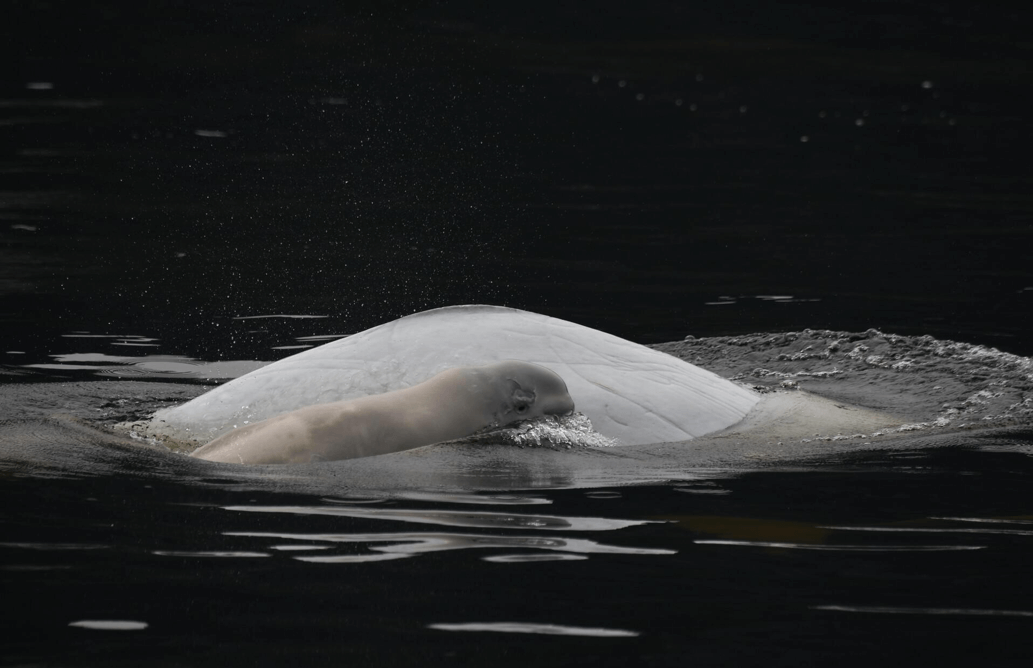While the oil port project was abandoned six months ago due to the fact that the beluga population was assessed as endangered and because the project was perceived as a threat to the belugas, the announcement of the construction of an industrial port in Cacouna reignites the debate on environmental issues. As part of the Maritime Strategy recently unveiled by the Quebec government, a series of developments are due to take shape along the St. Lawrence and pass through the habitat of belugas and other marine mammals.
As part of the Ministry of Transport’s Maritime Strategy, Minister Jean D’Amour announced this past July 5 the development project of an industrial port in Cacouna. This project represents a potential for economic development in the municipality of Cacouna and the region of Bas-Saint-Laurent. It is envisaged that this project would also involve construction of a railway line with a view to expanding the industrial sector and increasing the number of companies in the region.
More ships in the nursery
This industrial port project will result in increased vessel traffic in the Cacouna area. However, this is the region where the beluga population has its nursery, i.e. where female belugas calve and care for their newborns. Christian Simard, Executive Director of Nature Québec, reacted sharply to the announcement: “After the extensive debate that led to the abandonment of the oil terminal project that TransCanada wanted to build in the heart of the beluga nursery, an endangered species, we cannot understand the blindness of the government, which does not appear to be able to incorporate this essential element into its maritime development projects.” He is urging that this beluga habitat be protected once and for all by enlarging the Saguenay-St. Lawrence Marine Park which, as we recall, was established in 1998 for its protection.
This nursery is part of the critical habitat of the St. Lawrence beluga, a population estimated at 800 individuals which has been assessed as “endangered” since December 2014 by the Committee on the Status of Endangered Wildlife in Canada. Its status has indeed been raised a notch in the assessment of its situation, ever since scientists sounded the alarm in 2013 when they published a Science Advisory Report. They established that the population has been suffering a decline since the early 2000s and that the number of newborn deaths is alarming, especially in 2012, during which there were about a dozen.
It is also the announcement of this status that put a halt to TransCanada’s project to install a terminal for receiving oil from western Canada via its Energy East pipeline construction project and then exporting it by ship.
An ecosystem-wide development strategy
The Cacouna port project raises serious concern among environmentalists and scientists working for beluga conservation. Ship noise and the risk of collisions would likely increase with the intensity of maritime traffic. These factors would be a source of disturbance in the nursery, potentially creating stress situations and temporary or prolonged separations of baby belugas from their mothers.
“This news is disturbing because the government is beginning to make these announcements in piecemeal fashion, affirms Robert Michaud, scientific director and co-founder of the Quebec-based Group for Research and Education on Marine Mammals (GREMM) and St. Lawrence beluga specialist. When we talk about the St. Lawrence, we’re talking about a system. Each activity will have an impact on belugas. Tomorrow they’ll be talking to us again about a liquefied gas terminal and another terminal for exporting phosphate ores, and another project related to the Plan Nord.
The Quebec government plans to invest $300 million to create nearly a dozen industrial and port areas on the banks of the St. Lawrence. Mr. Michaud continues: “If we want to plan an integrated maritime strategy which can be claimed to foster sustainable development, we must act in a proactive manner, rather than in reactive fashion as the government forces us to do. We now know full well that Cacouna is a fragile place; we could contribute our scientific knowledge to these projects. The entire maritime strategy should undergo a comprehensive review, especially from the standpoint of increased traffic and its effect on marine mammals. All these projects will have cumulative impacts, and some impacts will be greater than others. We will have determine our priorities and make difficult choices.”
Sources
On the Ici Radio-Canada website:
Le gouvernement Couillard veut développer le port de Cacouna
On Le Devoir website:
Québec veut développer le port de Cacouna
On the Nature Québec website:
On the Infodimanche website:
Stratégie maritime: inquiétude pour les bélugas de Cacouna
To learn more:
On Le Devoir website:
Zone industrialo-portuaire à Cacouna – L’annonce de Québec suscite de «vives inquiétudes»
On the website of the Quebec government’s information feed:
On Whales On Line:
St. Lawrence Belugas Declining
L’habitat essentiel du béluga du Saint-Laurent est à protéger d’urgence (presently in French only)
Projet de port pétrolier à Cacouna: un danger pour les bélugas (presently in French only)





